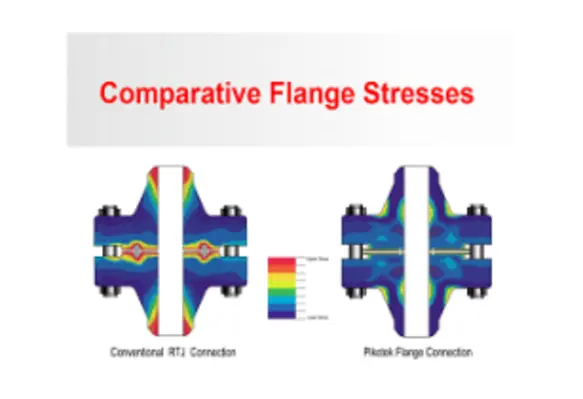The ramifications of corrosion within the oil and gas industry can be devastating for many reasons, according to Robert Colton, director EMEA at Garlock Pipeline Technologies (GPT)
Not only is there the dramatic increased cost of replacement parts and components, it can also result in huge losses owing to loss of production. Other consequences can include the effect on the environment owing to spills and leakages from corroded pipelines.
Far more important than any loss of revenue or cost to the business is the increased risk to human life. The owner’s pipelines, facilities and assets can be replaced in the event of explosions or disasters, but human life sadly cannot.
The annual cost of corrosion to the oil and gas industry globally is thought to exceed around of US$60bn globally with the US alone coming in at an estimated figure of US$27bn. These figures can be broken down into up, mid and downstream segments where corrosion can manifest itself in different ways.
From a downstream perspective, it is estimated that the global costs of refinery corrosion is thought to be in the region of US$15bn annually. This figure excludes any losses from production downtime and profit losses resulting from this. It is sometimes difficult to obtain more accurate information on these losses as some refineries do not make these numbers available or convey the actual extent of their corrosion issues for reasons which are obvious.
A report by NACE International states that in the USA alone annual profit losses due to refinery corrosion could be in the region of US$12bn, so the extent and cost of corrosion can be vast across all sectors of oil and gas.
Over the past 30 years, operating conditions in the oil and gas industry have changed hugely and have become more challenging not only from a production perspective and the complexities that brings, but also in terms of the transportation and refining of these highly corrosive media that are being extracted.
GPT found that the offshore oil industry in particular is continually pushing oil exploration to greater depths than ever before, which in turn leads to greater pressure conditions and harsher environments.
Advanced technologies developed over many years have meant that drilling to exploit hydrocarbons is now reaching greater depths, thus producing a higher rate of production from domestic reservoirs. However, while deeper drilling increases the life of these wells and production, this comes at a cost in that the sour media can contain much higher levels of highly corrosive Hydrogen Sulphide H2s.
One of the main causes of corrosion which primarily affects up and downstream segments are production, transportation and refining of sour crudes. One area where leakage is a concern is at the bolted flange joints of which there can be many within any complex.
The joints consist of two mating flanges with some form of gasket material between them. Leakage at these joints could be a result of the corrosive product being transported through the lines which then attack the steel flanges through corrosion and erosion thus reducing actual flange material from the sealing surfaces to such an extent that the gasket and seal may be compromised and allow leakage to occur.
This is also evident on high pressure flanges which utilise metallic ring type joint (RTJ) gaskets (see Fig 1.) as the inside diameter of these gaskets do not match the bore of the flange and leaves a gap which during the transportation of very sour media harbors extremely corrosive deposits which will over time corrode and degrade the flanges to the extent of requiring replacement.
The image (Fig.1) is a finite element analysis and shows stressed areas in red on the flange where huge torques is applied to create a seal. These stressed areas are more susceptible to corrosion and will risk be increased greatly with the buildup of aggressive deposits from sour crudes. (Fig.1)
 GPT are world leaders in the design and manufacture of flange isolation kits which eliminate this risk of buildup of corrosive deposits on RTJ gaskets and exposed flange faces. GPT design and manufacture the Pikotek VCFS and EVOLUTION® range of flat gaskets which match the bore of the flanges regardless of the pipe schedule thus preventing the build up of corrosive and conductive deposits. These gaskets can be used on a RTJ, flat and raised face flanges. (See Fig.2)
GPT are world leaders in the design and manufacture of flange isolation kits which eliminate this risk of buildup of corrosive deposits on RTJ gaskets and exposed flange faces. GPT design and manufacture the Pikotek VCFS and EVOLUTION® range of flat gaskets which match the bore of the flanges regardless of the pipe schedule thus preventing the build up of corrosive and conductive deposits. These gaskets can be used on a RTJ, flat and raised face flanges. (See Fig.2)
Approved by many major end users around the world including Saudi Aramco and Shell, GPT have vast experience in the design and manufacture flange isolation kits which help to fight corrosion by controlling current flow for Cathodic Protection systems and preventing galvanic corrosion though isolating dissimilar metals.
From production to refining, these extremely sour and corrosive media are pushing corrosion control and monitoring to new levels and forcing end users to allocate huge maintenance budgets to ensure integrity of their facilities are maintained.
Recent and significant plummeting in oil prices may be good news for consumers at the pumps. However, with revenues so low, the bottom line will be hit hard within many organisations across the industry and this in turn will reduce cash flow for investments, projects and may cause maintenance programs to be reduced. The affects on maintenance programs throughout the oil and gas industry would give great concern for the health and safety executive as effects of some materials owing to aggressive and corrosive media can be extremely severe, and therefore any leakage as a result of corrosion is of grave concern.
For more information, please visit: www.gptindustries.com








